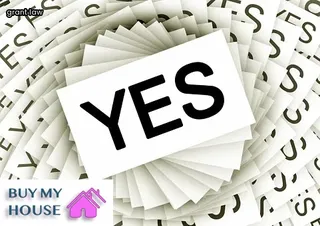Completing a Utah Quitclaim Deed is a straightforward process that requires understanding the basics of what a quitclaim deed is and how it works. A quitclaim deed is a document used to transfer ownership of property from one person or entity to another without making any promises or guarantees about the legal title of the property.
In Utah, the deed must include specific language to be legally valid and it must be signed by both parties in front of two witnesses. When completing the deed, you will need to provide information about yourself (the grantor) and any other people involved in the transaction (the grantee), as well as information about the property being transferred.
Additionally, you will need to complete a Property Tax Reimbursement Affidavit if applicable. Once all of this information is provided, you will sign and date the document in front of two witnesses who also sign it.
At that point, your Utah Quitclaim Deed will be legally complete and accepted by courts in Utah. It's important to note that while a quitclaim deed can be used to transfer ownership of property in Utah, it does not provide any protection for either party if there are any issues with title or ownership rights related to the property.

Completing a Utah Quit Claim Deed for your house can offer several benefits. This legal document allows you to transfer the ownership of property without providing any warranties or guarantees, which can make it easier and less expensive than other forms of conveyance.
Additionally, this deed is often used in situations such as divorce settlements or when transferring property between family members, since it provides an efficient way to establish clear ownership without having to go through the legal process of a title search. Furthermore, when a Utah Quit Claim Deed is used to transfer property, the taxes associated with the transaction are often lower than in other forms of conveyance.
All in all, completing a Utah Quit Claim Deed for your house can be an effective way to quickly and securely transfer ownership without costly legal fees and complicated paperwork.
Anyone with an interest in the property can execute a Utah quitclaim deed. This includes the current owner, who is transferring their rights or interest in the property to another person or entity.
Additionally, the recipient of these rights and interests, who is taking ownership of the property, can also execute a quitclaim deed. It is important to remember that any party involved in executing a quitclaim deed must be legally authorized to do so.
Generally, this requires being 18 years old or older and having capacity to enter into legal agreements. If any party does not meet these requirements, they must have someone else legally authorized to act on their behalf.
In addition, all parties must sign the quitclaim deed in front of two witnesses and a notary public for it to be valid.

When preparing a Utah Quitclaim Deed, the grantor (seller) must provide certain information to complete the deed. This includes the names and addresses of both the grantor and grantee (buyer), a legal description of the property being transferred, the name of the county where it is located, and an acknowledgement signature from both grantor and grantee.
It is important that all information is accurate, including spelling of names and address, as this will be included in public records. The recording office might require additional documentation as well, such as a vesting affidavit or tax identification number.
Make sure to check with your county recorder's office so you can ensure you have everything you need to successfully record the deed.
Creating a Utah Quitclaim Deed is a relatively straightforward process that can be completed in just a few steps. To ensure the deed is legally binding, it must contain specific information and be signed by all parties involved.
The first step is to obtain the necessary forms from your county clerk's office. Once you have the form, you will need to fill in the required fields with information about the transferor (the person transferring ownership) and the transferee (the person receiving ownership).
You will also need to include a legal description of the property being transferred. After this information has been filled out, both parties must sign and date the document.
It’s important to remember that signatures must be notarized in order for the deed to be valid. Finally, make sure to file the deed at your local county recorder's office so it can be officially recorded and become part of public record.
Following these simple steps will ensure that your Utah Quitclaim Deed is properly created and accepted by all relevant authorities.

Once a Utah Quit Claim Deed is executed, the process of transferring real estate in the state of Utah is complete. The deed will be recorded with the County Recorder's Office and become part of public record.
This means that any future buyer of your property will have access to information about the transfer. Furthermore, if you owe back taxes, liens or other debts on the property that are not paid, they can become part of the new owner's responsibility.
After recording your deed, it is important to keep a copy for your own records as proof that you have completed the transfer. Additionally, you should contact any relevant parties such as lenders or insurance companies to inform them of the change in ownership so that they can update their records accordingly.
If you are looking to complete a Utah quit claim deed for your house, there are several free resources available online that can provide assistance. Before beginning, it is important to understand the purpose of a quitclaim deed, which is a document used to transfer ownership of real estate from one person to another.
This type of deed offers no warranties or promises and doesn't require any personal financial information. Once you have familiarized yourself with the basics, there are free forms available online that can be used in Utah.
A few reputable sites that offer these documents include RocketLawyer, LawDepot, and USLegalForms. Additionally, Utah courts have published an official guidebook on how to fill out these deeds correctly.
It's important to review the instructions carefully so that you can be sure all steps are completed accurately. Finally, once the form has been filled out and signed by both parties it must be notarized by an authorized notary before being filed at the local courthouse or county recorder's office.
With the right resources, completing a Utah quit claim deed for your house can be done quickly and easily.

It's important to be aware of the common mistakes people make when preparing a Utah Quitclaim Deed. Filling out the form incorrectly is one of the most common problems.
Be sure to fill out all sections, including your name and address, the names of all parties involved in the quit claim deed, and the legal description of the property. Additionally, make sure to sign and notarize the document for it to be legally binding in Utah.
Another mistake is not filing with county recorder's office after completion. Once you have filled out all sections correctly and signed off on it, you must file with your local county recorder’s office in order for it to be valid and publically recorded.
The last mistake to watch out for is forgetting to include any additional documents that may be necessary such as a Power of Attorney or death certificate if appropriate. By taking care when preparing a Utah Quitclaim Deed and avoiding these common mistakes, you can ensure that your transaction is properly completed without issue.
Filling out a Utah quitclaim deed can seem like an intimidating process, but with the right guidance it can be relatively simple. To begin, you will need to obtain the necessary forms, which can usually be found online or through your local county recorder's office.
Once your forms are obtained, you will need to include all of the relevant information needed to complete the deed. This includes filling in the names of all parties involved in the transaction, as well as specifying in detail the property that is being quitclaimed.
Additionally, you should make sure that all of your information is accurate and up-to-date. After this step is completed, you must then sign and notarize the document before submitting it to your county recorder's office for filing.
Following these steps should ensure that you have a successful Utah quitclaim deed experience and that your property transfer is legally binding.

When completing a Utah quitclaim deed online, there are some special considerations to keep in mind. An online template can make the process easier, but it's important to ensure that all required information is included and is accurate.
The deed should have the name of the grantor (the person giving up the title) and the grantee (the person receiving the title), as well as a legal description of the property. In addition, it must also include an acknowledgment from a notary public that all parties have signed or affirmed before them.
It's also important to ensure that all documents are properly filed with the county recorder’s office and that any applicable transfer taxes are paid when submitting this document. When filling out an online template for a Utah quitclaim deed, be sure to carefully review each step and double check all information provided to avoid any discrepancies when transferring ownership of your house.
A Utah quit claim deed is a legal document used to transfer ownership of real estate. The process for handling title changes with a Utah quit claim deed form is relatively simple and straightforward.
First, fill out the title information which includes the grantor (seller), grantee (buyer), and property address. Next, review the legal description and make sure it accurately describes the property that is being transferred.
After that, sign the document in front of a notary public and have them witness the signature. Finally, record the paperwork at the local county recorder’s office along with any applicable fees or taxes.
It’s important to complete all these steps in order to ensure a smooth and successful transfer of ownership from one party to another. With just a few simple steps, you can easily complete a Utah quit claim deed form for your house and handle any title changes quickly and efficiently.

Filing a Utah Quit Claim Deed for your home is an important step in the process of transferring ownership or rights to property. It is important to understand that this document does not guarantee title to the property and should be reviewed by a lawyer prior to filing with the county recorder's office.
To ensure you are completing and filing the document correctly, there are some essential tips to follow. Make sure you have all of the necessary information including the names of all parties involved, a description of the property, date of execution and signatures, and any additional legal language required by state law.
Additionally, it is important to make sure that all forms are completed accurately and signed in accordance with state laws. Once completed, double-check that all information is accurate before submitting.
The original signed deed should then be filed with the county recorder's office along with any fees or taxes due for recording services. Following these steps will help ensure that your Utah Quit Claim Deed is properly completed and filed in order for you to transfer ownership or rights to your property.
When completing a Utah Quit Claim Deed for your house, it is important to understand the additional legal requirements for filing in Utah. These requirements include having the deed notarized before submitting, filing the deed with the county recorder's office of the county where the property is located, and providing proof of identity when filing.
The deed should also be signed by all parties involved and include the property address and legal description. In addition, it is important that all signatures are witnessed by two people who are not related to any of the parties involved.
Before submitting your Quit Claim Deed, be sure to check with your county recorder's office to make sure that you have provided all necessary documents. Additionally, a registration fee will be required for processing your deed.
If you need assistance understanding these legal requirements or filling out your quit claim deed properly, contact a local real estate attorney or title company for guidance.

It is important to understand the property rights associated with owning a home in Utah before completing a Quit Claim Deed. To ensure that you have all of the necessary information, it is recommended to access additional resources.
These can include consulting an attorney or legal expert on real estate law, researching online through government websites, or attending seminars and workshops related to property rights in Utah. Additionally, there are numerous books available for purchase which provide comprehensive information about the state's laws and regulations.
Understanding the nuances of this process can be difficult and intimidating; however, by utilizing these additional resources, you will have a better understanding of what needs to be done in order to successfully complete your Quit Claim Deed.
When it comes to real estate transactions in Utah, there are a variety of documents that must be completed for the process to move forward. One of these documents is the Utah Quit Claim Deed, which is used to transfer ownership of a property from one party to another.
To complete this deed, both parties must fill out the necessary information on the form, including the current owner's name and address, the new owner's name and address, and the legal description of the property being transferred. Once all of this information has been filled out and signed by both parties, it must be notarized so that it can be filed with the county recorder's office.
This document is an important part of any real estate transaction in Utah as it provides proof of ownership for a property and helps ensure that all legal requirements are met.

A Utah Quit Claim Deed is a legal form that transfers the ownership of real property from one person to another. The fees associated with this form may vary depending on the county and specific circumstances of the transfer.
Generally, it costs between $20 and $30 to file the quit claim form in most counties. Additionally, there may be other costs such as title search fees, recording fees, and notary public fees that are typically required for a quit claim deed.
These additional costs can range from $50 to several hundred dollars, depending on the complexity of the transfer. It is important to understand all associated costs before starting the process so that you can plan accordingly for any expenses related to completing a Utah Quit Claim Deed for your house.
Completing a Quit Claim Deed for your house in Utah can be daunting, especially if you are unfamiliar with the process. It is important to know when seeking professional legal assistance regarding a Quit Claim Form in Utah is necessary.
There are certain aspects of completing the form that can be difficult or confusing without help from a knowledgeable attorney or legal professional. Before beginning any paperwork, it is wise to research and understand the real estate laws of Utah, as they may differ from other states.
Additionally, you should consult with a real estate lawyer who specializes in land transactions and understands the ins and outs of Quit Claim Forms in Utah. They will be able to provide valuable insight into the process and ensure that all documents are accurate and legally binding.
Furthermore, they can answer any questions or concerns that you may have about completing the form and filing it with the relevant county recorder’s office. Ultimately, consulting with an experienced attorney before starting the Quit Claim Form process can save time, money, and hassle in the long run.

Completing a Utah quit claim deed correctly is an important step when transferring ownership of a house. To ensure that the form is properly registered in Utah, there are some key strategies to consider.
First, it's important to determine if the deed requires notarization; if so, make sure to have this done before submitting the document. It's also essential to know all parties involved in the transfer and to include their names on the form.
Additionally, for any witnesses present during signing, make sure that they provide their contact information as well as their signature. Furthermore, be sure to check the state laws for other requirements such as filing with local county offices or acquiring stamps from the county clerk and recorder's office.
Lastly, it is recommended to mail all documents by certified mail with return receipt requested in order to verify that they have been received and processed properly. Following these steps will help ensure that your quit claim deed is properly registered in Utah.
When completing a Utah Quit Claim Deed for your house, there are other documents and considerations that should be taken into account. It is important to understand the process of transferring real estate titles in Utah and the necessary steps required for successful completion.
All parties involved in a real estate transaction must sign and date the deed, ensuring that all information is accurate, and that it meets state requirements. Additionally, the deed must be recorded in the county recorder's office where property taxes are paid.
Additionally, you may need to consider other documents such as a title insurance policy or survey to ensure that all rights to the property are protected. Furthermore, depending on the local laws, you may need to obtain a Certificate of Authority or other permitting documents before finalizing any real estate transaction.
Understanding all of these requirements will help ensure that your quit claim deed is properly completed and filed with the appropriate authorities.
To complete a Utah Quit Claim Deed for your house, you will need several important documents. First, you must obtain the Quit Claim Deed form from the county recorder's office.
This form must be completed and signed by both parties transferring the property. You must also have proof of ownership such as a title report or deed of trust.
Additionally, you will need to provide a valid government-issued photo ID such as a driver's license or passport in order to legally sign the deed. Finally, you will need to pay any applicable filing fees in order to submit the document to the county recorder's office.
With these items in hand, you are now ready to complete your Utah Quit Claim Deed for your house!.

Filing a quit claim deed in Utah is a relatively straightforward process. To ensure the deed is properly completed, it's important to understand all of the necessary steps involved.
The first step is to obtain a "Utah Quit Claim Deed" form from your county clerk's office. Once you have the form, make sure to fill out all of the required information accurately, including the parties exchanging ownership rights, legal descriptions of the property being transferred and signatures from both parties.
When you have finished completing the form, take it to your local county recorder's office and file it with them. The recorder will review the document and make sure it meets all of their requirements before officially recording it.
After that, you'll be able to access an official copy of your quit claim deed through your county recorder's office whenever needed for proof of ownership or other purposes.
If you are looking to transfer a deed in Utah, the process is easy when you know the steps. A Quit Claim Deed is a legal document used to transfer title or ownership of real estate from one person to another.
Filing a Quit Claim Deed in Utah allows for a quick and easy transfer of property from one owner to another without involving any court proceedings. To complete the deed, all parties must sign in front of two witnesses who then sign and date the document.
Once signed, it must be filed with the County Recorder's Office in the county where the property is located. This office will record the document and issue a new deed with your name on it as proof that you are now the legal owner of that property.
The filing fee can vary depending on each county but typically ranges between $10-$20. After filing, make sure to keep your original Quit Claim Deed in a safe place as this will serve as proof of ownership should any issues arise.
By following these few simple steps, transferring a deed in Utah can be done quickly and easily!.
Utah Code 57-1-13 is the official code that governs quit claim deeds in the state of Utah. This code states that a quit claim deed is to be used when transferring an interest in real estate between two or more parties.
It's important to understand this code when completing a Utah quit claim deed for your house, as it lays out specific requirements regarding how the document must be filled out and filed. The deed must include the names of all parties involved, their addresses, the property being transferred, and other pertinent information.
Furthermore, there are certain signatures that must be included in order to make the transfer valid. Finally, filing fees must also be paid before the deed can take effect.
Knowing and understanding Utah Code 57-1-13 is critical for anyone who needs to complete a quit claim deed for their house in Utah.
A: In Utah, if a married couple is divorced, they must each sign a separate individual quit claim deed in order to transfer any property owned by the marital estate. The quit claim deed should include both spouses' signatures and be notarized by a licensed notary public before it can be recorded with the county recorder's office.
A: According to Utah state law, in order to complete a Quit Claim Deed on a house in the state, both parties must sign the deed and have their signatures notarized. The deed must also include an accurate description of the property and it should be filed with the county recorder's office. Additionally, other real estate documents such as a title report may need to be obtained before transferring ownership of the property.

A: When completing a Quit Claim Deed on a house in Utah, Warranty refers to the seller's guarantee that they own the property; Tenants in Common refers to two or more people owning an undivided interest in the same property; Joint Tenants means two or more people owning equal shares of a property; and Tenancy by the Entirety is ownership of property by husband and wife as one legal entity.
A: Tenancy in Common is an arrangement that grants multiple people an ownership interest in a property without any right of survivorship; when one tenant dies, their interest does not automatically pass to the other tenants. Rights of Survivorship is an arrangement that grants multiple people an ownership interest in a property with the right of survivorship; when one tenant dies, their interest automatically passes to the other tenants. Co-Tenants are two or more people who jointly own property together under either a Tenancy in Common or Rights of Survivorship arrangement.
A: In order to transfer property rights on a house in Utah through a Quit Claim Deed, the grantor must sign and deliver the deed to the grantee, along with an accurate description of the property. The deed must be notarized and filed with the county clerk in order for it to be legally valid.

A: To complete a Quit Claim Deed on a house in Utah, you will need the following documents: (1) A MAP of the property listing the legal description of the property; (2) A MORTGAGE or GENERAL WARRANTY DEED indicating how any liens or other interests have been satisfied; and (3) A Quit Claim Deed form signed by all parties transferring title to the property. The Quit Claim Deed should be recorded at the county recorder’s office.
A: The requirements for creating a LIFE ESTATE with a Quit Claim Deed on a house in Utah include the parties involved, an affidavit that the parties are competent to execute the deed, and all other documents and forms necessary to transfer the property from the grantor to the grantee. In addition, state laws require that both parties sign before witnesses and an acknowledgement of delivery be included in the deed.
A: Yes. When gifting a house in Utah through a Quit Claim Deed, the Grantor must ensure they are not liable for any unpaid debts or obligations of the Grantee and that they have no further financial responsibility after completing the deed. Additionally, if gifting to heirs, it is important to make sure all parties involved understand their rights and responsibilities with respect to the house.
A: All parties must provide their consent and signature to a Quit Claim Deed in order for it to be valid in Utah. The deed must also be notarized, witnessed, and filed with the county recorder's office.